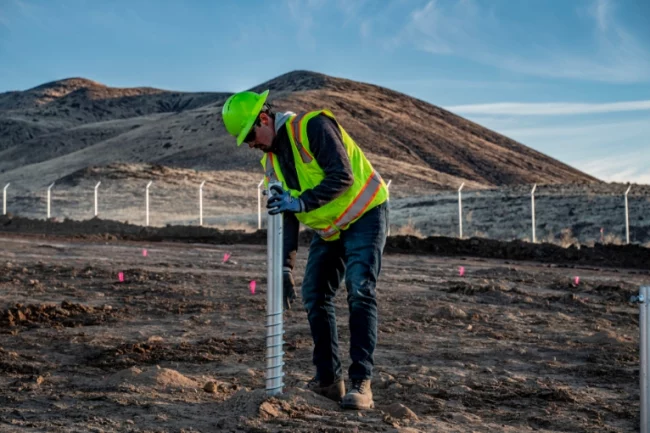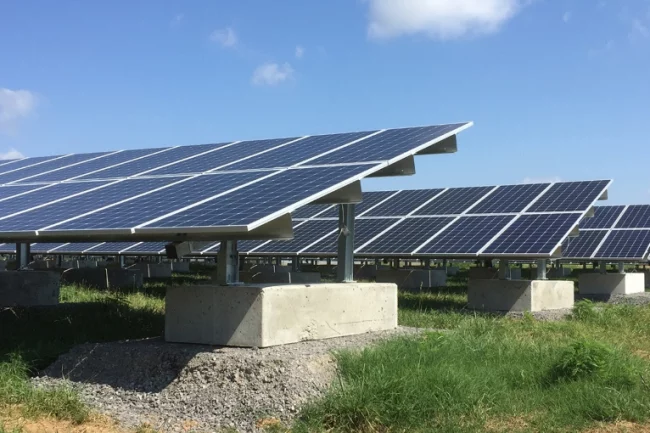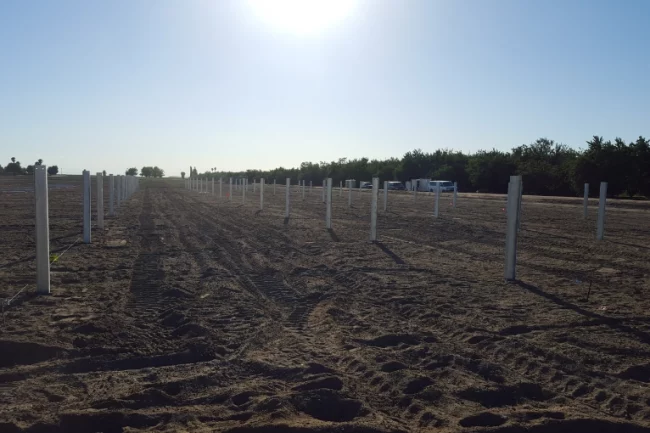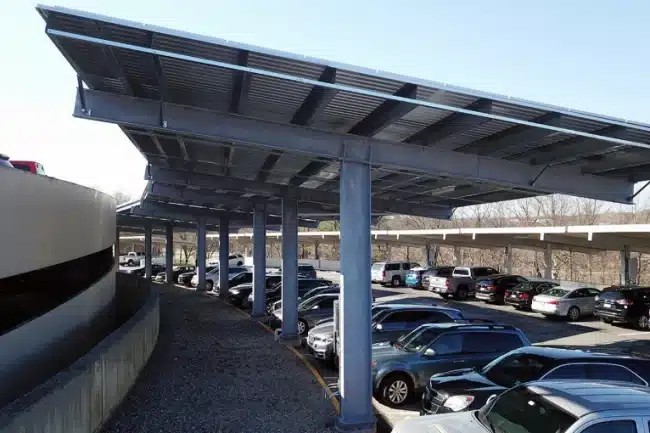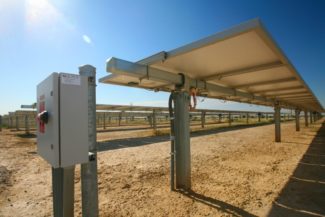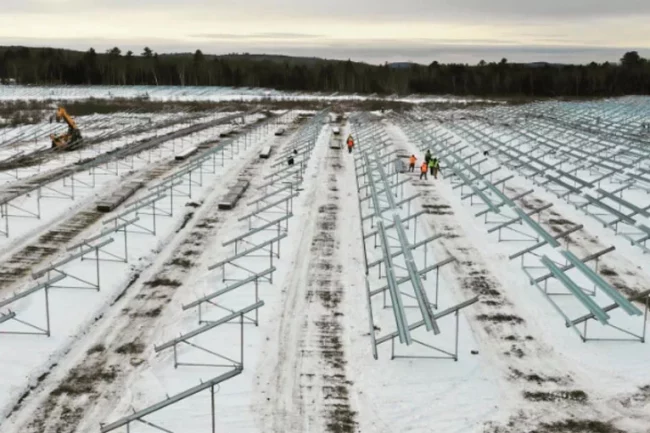EPCs and developers share top 5 concerns and opportunities
Unprecedented volatility. Material shortages. Equipment pricing uncertainty. These dynamics set the pace in today’s solar sector. But some racking companies like Terrasmart believe that reliable partnerships across the value chain can help alleviate some of these supply constraints for EPCs and developers.
We recently sat down with two of our partners to hear their thoughts about thriving in uncertain times. The Gray Pen Group is a Northeastern EPC with projects ranging from small engineering jobs to builds exceeding 100 MWs. Navisun integrates development, construction, ownership, and operation of DG, community, and storage projects in the Northeast and Mid Atlantic regions.
Here Brandon Matthews, president of The Gray Pen Group, and Stephen Campbell, Navisun’s COO, share their most pressing challenges and opportunities in today’s volatile market.

TOP 5 CHALLENGES TO STAYING ON TRACK
1. Supply variability
Everyone talks about supply constraints. But according to our partners it’s the fluctuation in lead times, more than availability itself, that makes planning difficult. Procurement lead times can stretch four months overnight, trickling down to affect project interconnect schedules, delaying the start of energy production, and cascading down to erode margins and other financial targets.
Pandemic-related material shortages are still very much an issue, despite reports to the contrary in mainstream media. Trade conflicts between the U.S. and China also are creating pressure, aggravating polysilicon and battery cell supplies.
In some cases, construction of the racking equipment can create long lead times. Or quick material change orders to take advantage of new incentive opportunities like the Inflation Reduction Act’s domestic content requirements (DCR) might derail schedules. It’s at times like these that a trusted partner can navigate around supply risks to support a seamless experience.
Flexible partners who are ready to pivot when needed can make all the difference. Gray Pen offered one example during its work with Terrasmart when the EPC changed its order to domestically source ground screws to take advantage of DCR tax credits. Terrasmart made the shift quickly with negligible impact to the schedule.
“I was hearing horror stories from other folks who had done the same thing with regard to the impact on their overall lead time,” Matthews told us. “Terrasmart was able to make that change to meet our scheduled demands – making us look really great to the owner and saving them from the risk of missing their net energy billing deadline.”
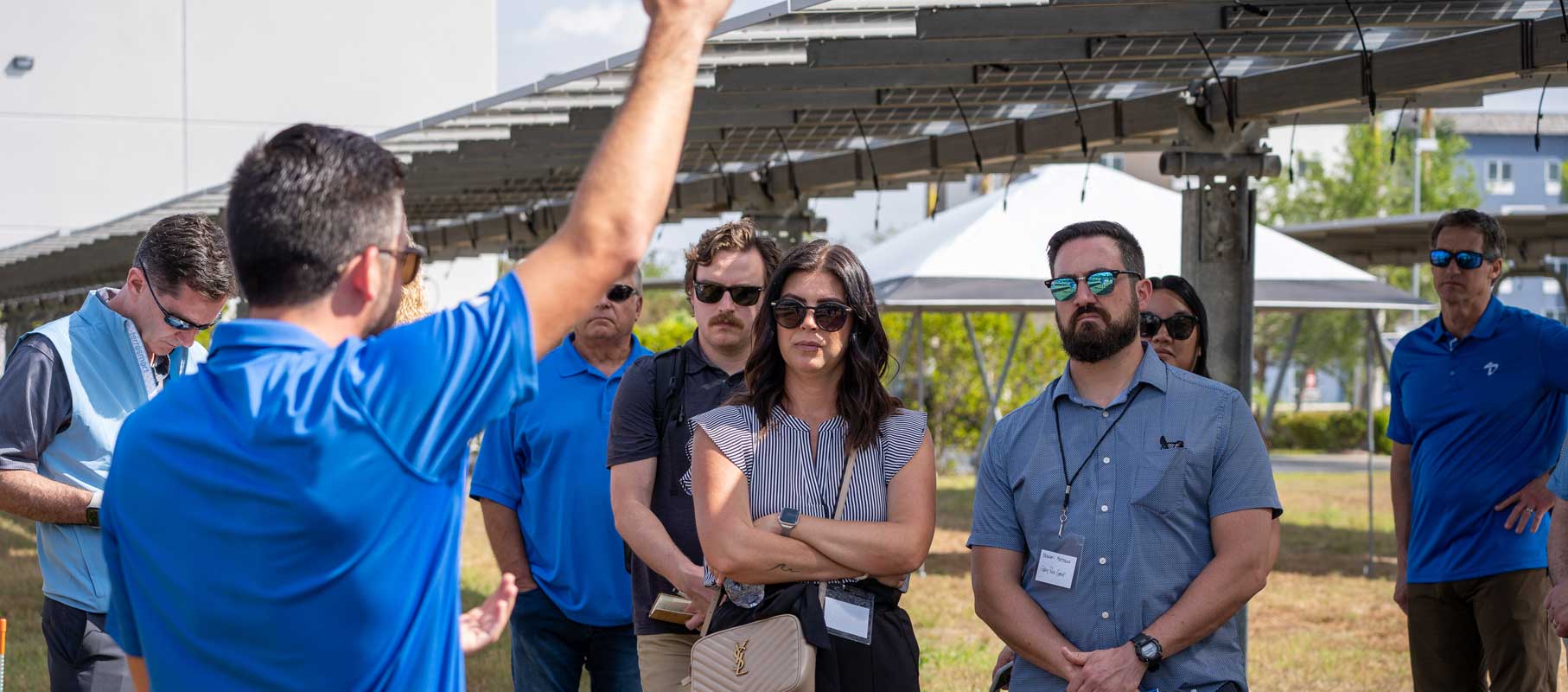
Director of Product Development, Chase Anderson, discussing the design of TerraTrak to pair with both ground screw and driven pile foundation to clients at Terrasmart’s Fort Myers, FL facility.
2. Materials price volatility
Today’s macroeconomic climate impacts all industries globally with stubborn inflation and ongoing market volatility. The recent four percent jump in the consumer price index affects everything and everyone. This marketplace variability burdens EPCs and developers as they seek to provide a firm, fixed price.
Tight, trusted partnerships that deliver support when times are tough set Terrasmart apart. Known for its firm numbers, Terrasmart executes on proposals without undercutting its ability to deliver projects on time.
“This is the ethos of Terrasmart and is what makes you so valuable,” Matthews says. “It’s a huge benefit to us to know the number that we agree to is the number that we’ll ultimately pay.”
3. Constrained and costly interconnections
Across the board, everyone feels the pain of interconnection and grid reliability. Utilities are trying to transform an aging infrastructure with a patchwork of new lines to connect renewable energy generation capacity while maintaining safe power and still keeping costs down.
In some regions, interconnection queues span out years with resource-intensive feasibility studies, limited visibility into a project’s interconnection, and burgeoning costs. A regional cluster study for a new project pool can result in hundreds of millions of dollars in interconnection upgrades. These costs get allocated to each project — in some cases beyond what DG projects can bear. Some see socializing grid upgrades as a necessary evil that spreads the cost of infrastructure upgrades across all ratepayers, instead of leaving developers holding the entire bill.
4. Execution risks
EPCs tend to be more susceptible to construction risks. They have set schedules and are dependent on their vendors once a project is under construction. As a result, they rely on their partners for precise planning and execution support. A sub-contractor’s ability to deliver on a well-thought out plan is a huge benefit if done well — or a major detriment if done poorly.
That means it’s crucial to find a seasoned partner with portfolio construction experience and the ability to organize multiple simultaneous projects seamlessly, including mobilizing production teams from one project to another. When the unexpected arises, that same partner must be adept at managing course corrections and work-arounds while maximizing everyone’s time.
“Contingency planning makes a good contractor,” Matthews explains. “The team from Terrasmart is one of the big reasons that we’ve been successful so far. Your ability to deal with variability, anticipate issues and resolve them proactively has been a huge bonus for us.”
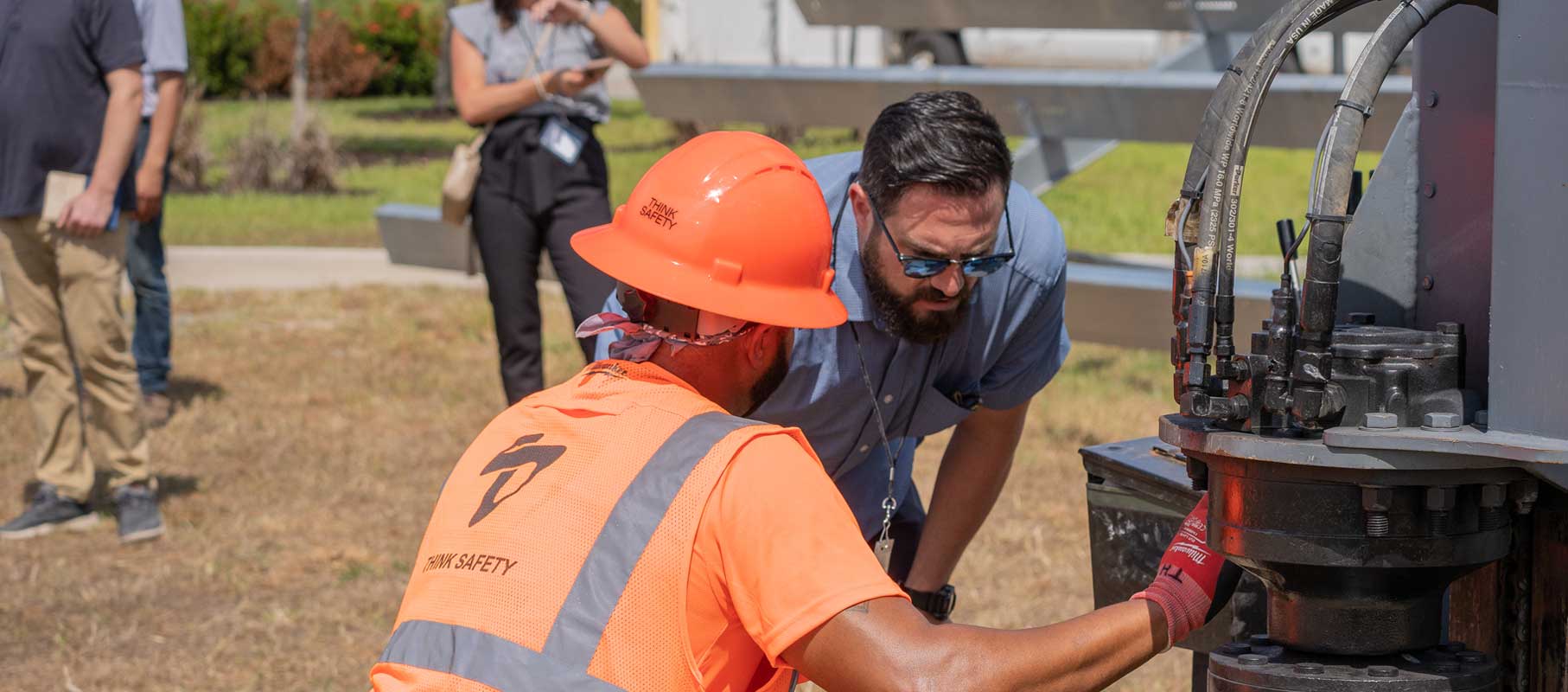
Project manager, Ron Dawkins, demonstrating to Brandon Matthews with Gray Pen, how Terrasmart’s proprietary ground screw install machine (TSM) operates.
5. Regulatory risks
Community solar and DG developers do not have the luxury of operating in a singular, national market. Instead, they must juggle a variety of constantly changing laws and regulations across 50 disparate states forming a complex maze of market norms.
TOP 5 OPPORTUNITIES TO GROW AND THRIVE
To offset these market challenges, EPCs and developers are leaning more than ever on integrated partnerships to maximize value and profitability. Proactive problem solvers with a design-to-build approach across portfolios help create new opportunities for faster, smarter solar.
1. Solving problems for optimized constructability
EPCs and developers appreciate racking partners with the know-how to innovate new ways to optimize construction. It requires far more than just putting a foundation in the ground. Only in-the-field experience can take things like wire management, field tolerances, and table alignment into account to design the fastest, highest-quality installation possible. Problem solving is key to ensuring PV longevity. For example, how can additional subsurface galvanization ensure reliability across all environments? How can it be done most cost effectively?
“Terrasmart’s engineering team is always offering innovative recommendations to ensure a 40-year design in our standard specs and methodologies,” says Navisun COO Stephen Campbell. “Once you work with a partner that anticipates your needs, you get the quality and safety that is of the utmost importance to us.”
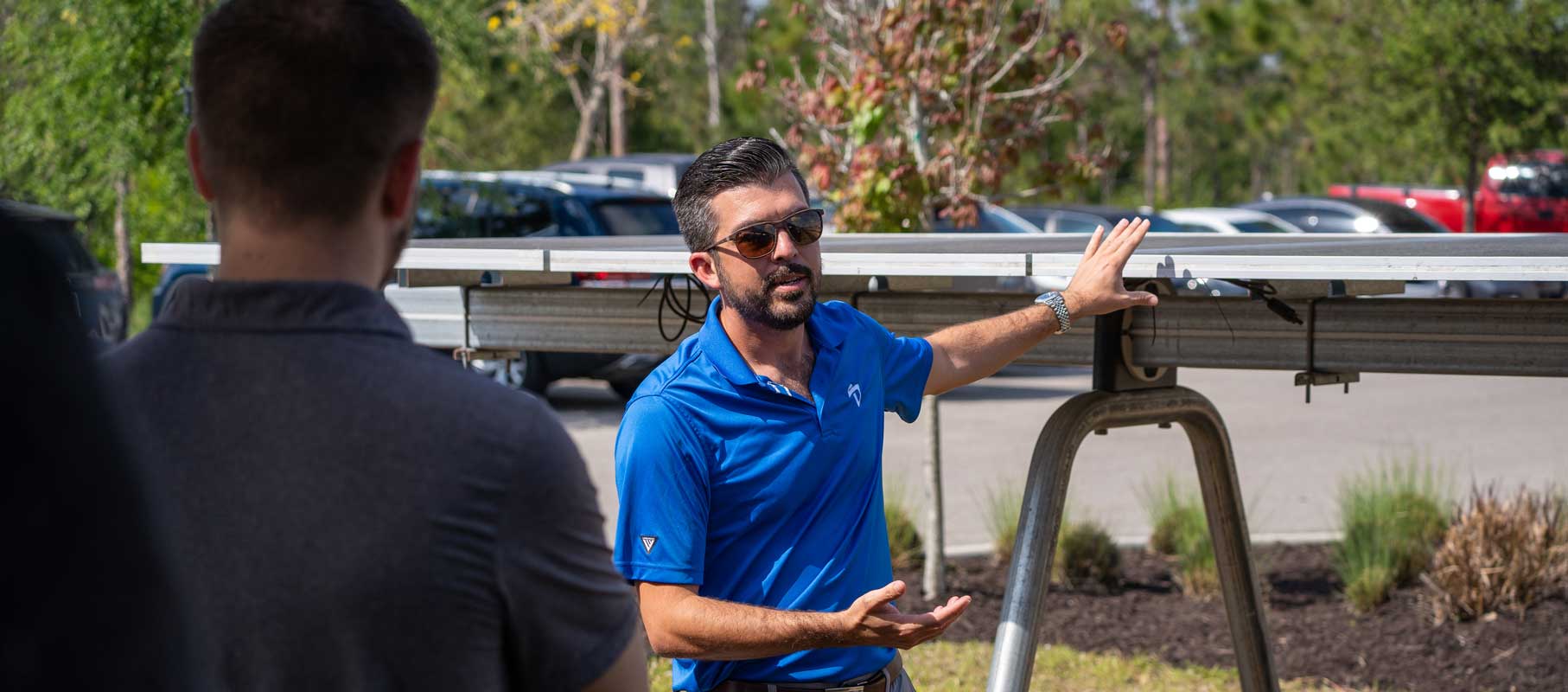
Anderson explaining the importance of wind tunnel testing to ensure a solid design for 1 and 2P tracker to withstand extreme weather conditions.
2. Partnerships across portfolios
Portfolio partnerships that encompass developers, EPCs, and racking companies create significant advantages for all players, including pricing certainty and helping to leverage the cost of capital. Master sales agreements across portfolios help stabilize equipment supply risks. Some inventive racking partners are creating mechanisms to share risk with their customers through steel price hedging that is only possible with larger portfolio commitments.
But it’s more than that. When racking designers understand their customers’ long-term goals across project portfolios, additional value can be found through optimization, effectiveness, stability, and long-term quality.
Ultimately, successful owners look for partners who pay attention to details throughout every project across a portfolio.
“We’re still trying to optimize. We’re still trying to get the most cost-effective way of doing things,” says Matthews. “Overall, our portfolio partnership with Terrasmart has led to long-term stability and quality that is incredibly important to us.”
3. Integrated racking and installation
Ground mount companies that install their own products have both the design and the construction mentality that EPCs and developers want. Having a broad variety of products allows flexibility to work on diverse sites with vastly different installation demands. There are unique advantages to being able to identify whether a site calls for driven piles or ground screws and then being able to deliver the best option quickly and cost effectively.
“Terrasmart’s unique understanding of site constraints and your ability to offer a broad suite of racking options to meet these conditions makes all of the difference,” Campbell says. ”And because of our experience with you, we can count on the quality of your solution — not just your racks.”
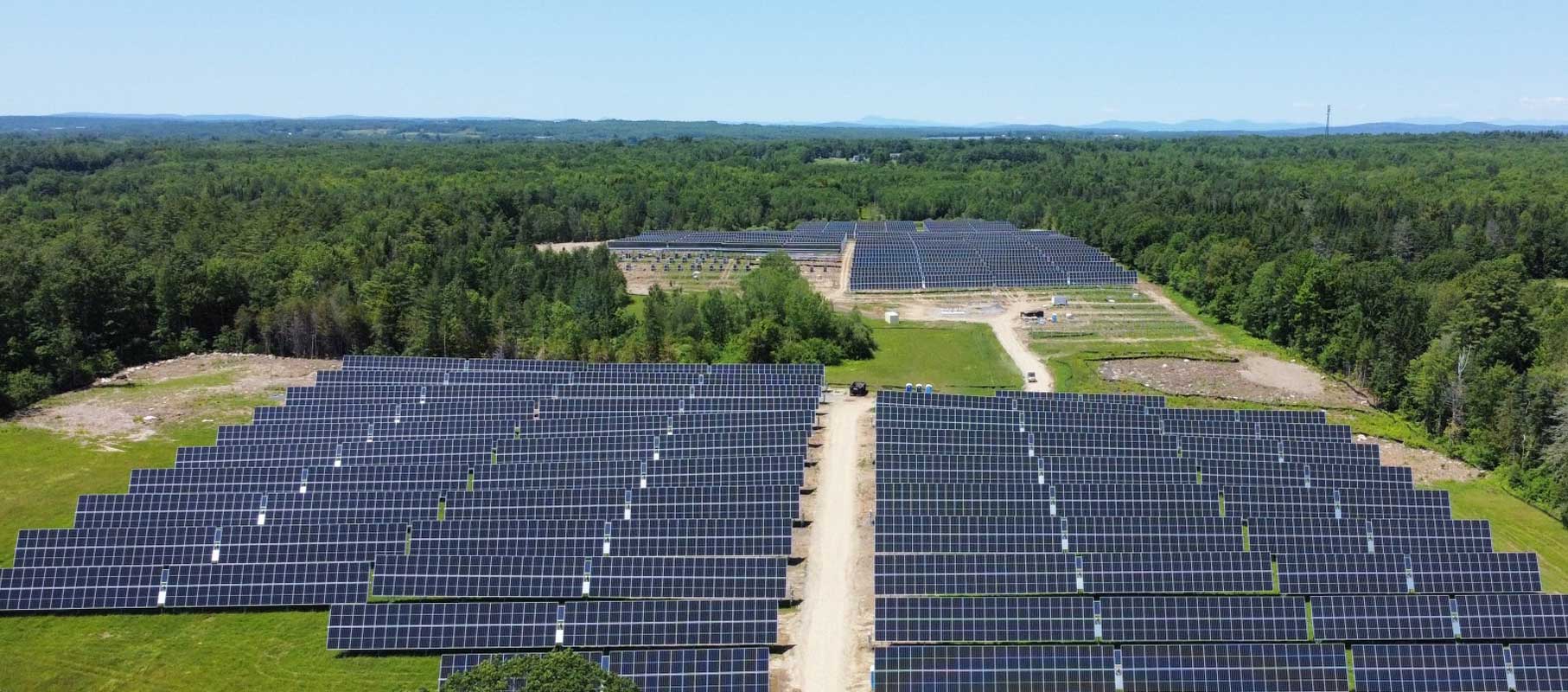
6 MW solar site in Benton, Maine – built for our developer partner, Navisun.
4. System quality
Racking companies that prioritize research, product development, and field testing for new and existing systems deliver the highest possible quality. For EPCs and developers, innovation is as much about field efficiencies for faster installations as it is about novel products.
Mounting vendors that take the time to have engineering and development teams meet with clients are able to keep on-site issues at the forefront, creating transparency and certainty around things like workmanship and overall warranty periods.
“I’ve spent a lot of time down at Terrasmart’s facility and I saw what goes into every decision made,” says Matthews. “You guys embody quality and it helps us ensure the owner will hire us time and time again.”
5. Partnership model
Strong partnerships are based on mutual understanding all along the value chain. It’s a two-way street: Vendors want to know what is important to their customers and customers want to know how to be a good partner in tough times as well as in good ones.
The most effective partnerships have a mutual understanding across functions and levels, aligning goals and mentalities through each phase of the project. When transparency and communication are built in on both sides of the organization, the true value of the partnership can be realized.
“From initiation of the opportunity all the way through execution, Terrasmart supports us on schedule, quality, and cost,” Matthew says. “I can’t ask for anything more out of a partner.”
Campbell looks for integrity throughout the experience. “Honesty, partnerships and quality — that in a nutshell is our entire experience with Terrasmart,” he says. “There’s a home for integrity in the industry and that’s what led me to find Terrasmart.”
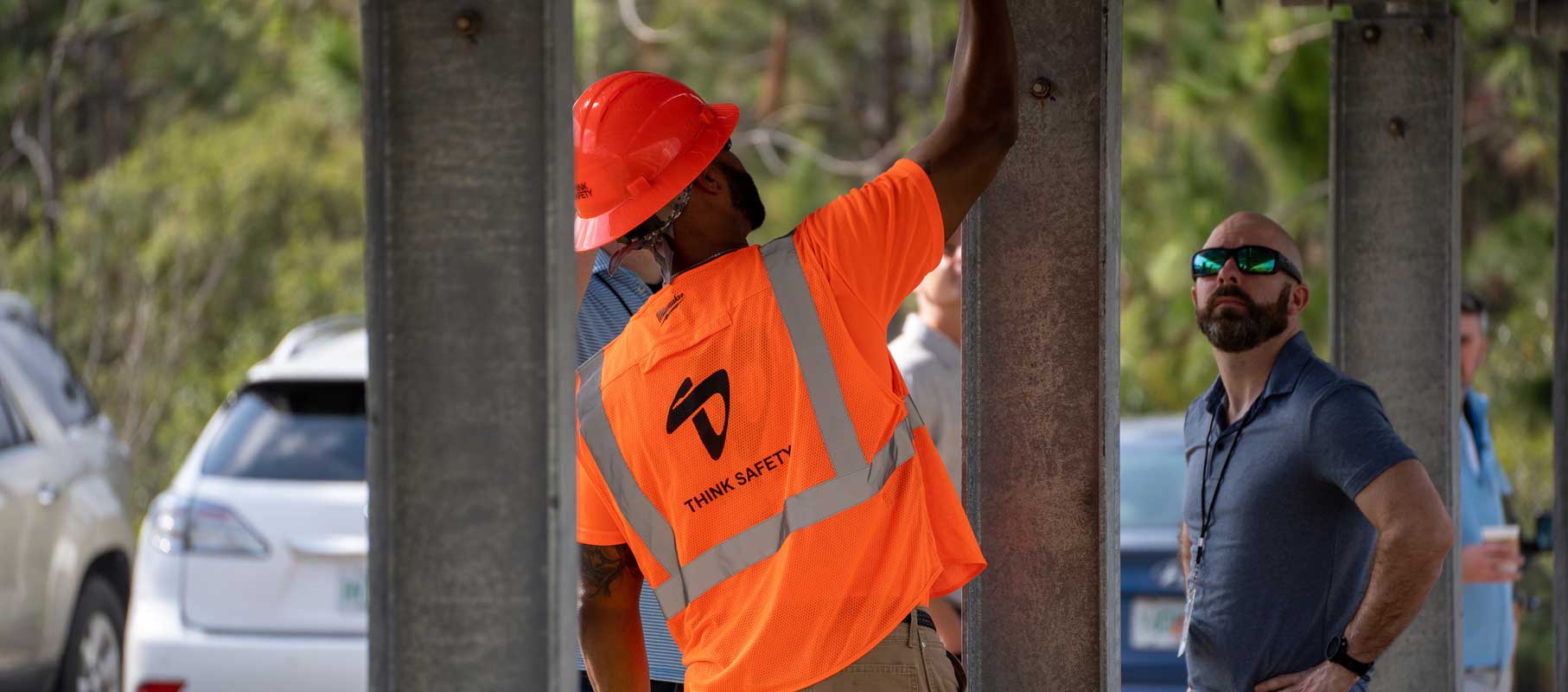
Dawkins showing the reduced parts in GLIDE Wave ground mount design and how it saves time in the field.

